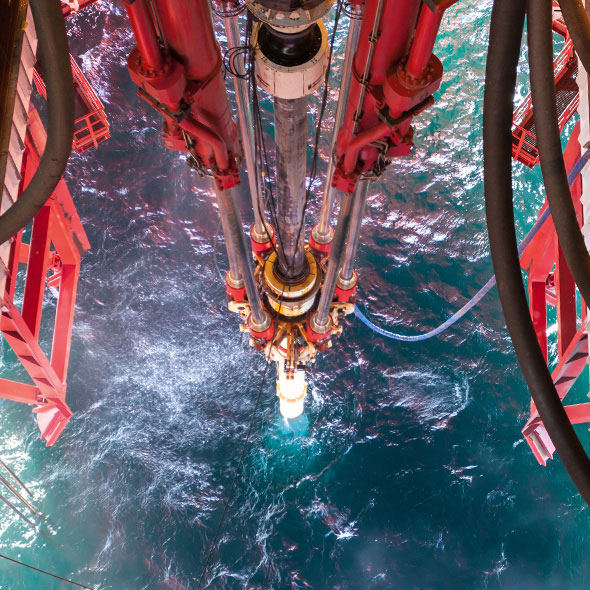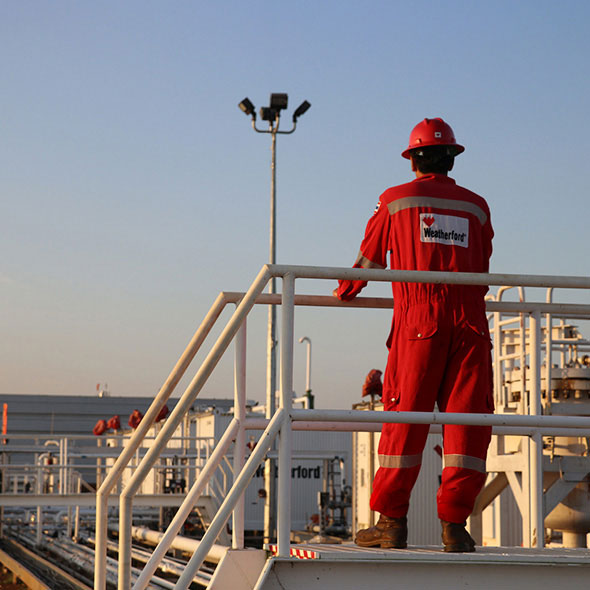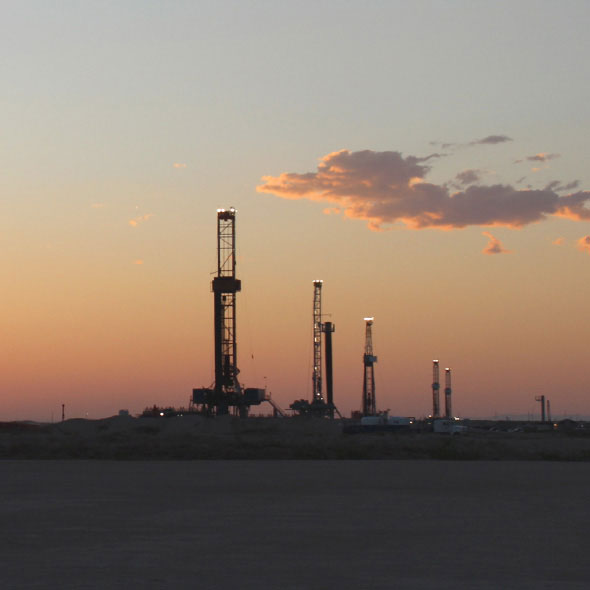Managed Pressure Wells
Not Just for Drilling
Building on more than five decades of experience as the industry’s MPD leader, Weatherford, along with our customers, has redefined what you can achieve by managing pressure. With Managed Pressure Wells solutions, you can apply the same field-proven technology to deliver higher quality wells with fewer surprises. By ensuring a stable wellbore, you create a comprehensive pressure management strategy that enhances safety, lowers your well-construction costs, reduces well-control risks, and increases production.
Your Well
For decades, Weatherford’s robust portfolio has helped you maintain bottomhole pressure to create a pressure-tight barrier against drilling hazards and manage inflow from the formation during drilling. But managing pressure isn’t just for challenging wells. It is a performance-enhancing solution for numerous well classifications including horizontal, directional, development, and multi-laterals.
By using Managed Pressure Wells solutions as an integral part of your operations, you can maintain wellbore stability by keeping the pressure inside the operating window, avoiding wellbore collapse and formation damage while improving efficiency.

Your Operation
Almost every activity within a well alters its pressure. Too low a pressure and you experience kicks, breakouts, and collapse. A pressure too high results in reservoir damage, losses, and slower drilling. Additional wiper trips or hole cleaning runs might be necessary, increasing the overall costs. Under certain circumstances, an influx can lead to a substantial environmental impact, and a surface blowout can result in loss of life, asset, or your company’s reputation.
Striking the right balance is key. With Managed Pressure Wells solutions, every operation contributes to maintaining the safe operating window. By diverting flow away from the rig floor and dynamically altering the pressure inside the annulus, you can drill faster with fewer problems and deliver a more productive well.

Your Environment
Different environments present unique challenges to all drilling operations. Surprises still occur, yet the common methods to manage pressure are either slow (mud changes), passive (modelling), or have an environmental impact (chemicals, logistics, flaring), all of which drive up the overall costs.
Managed Pressure Wells solutions deliver comprehensive pressure management no matter the environment, be it deepwater, shallow water, land-based, or extreme environments.

Better Managed
You already manage the pressure in your well. We provide you with the tools to help you manage pressure even better. Weatherford delivers a trusted approach to all your wells and we continue to innovate and push the industry forward.
Designed to fit any rig floor footprint, our innovative Managed Pressure Wells solutions integrate rig equipment with smart technology for machine-to-machine communication, real-time analysis of downhole conditions, and rapid automated responses from a central location.
Working with industry partners, our technology harnesses the power of advanced algorithms, hydraulic models, and predictive analysis to enable fast identification, decision-making, and reaction to well control events, dramatically reducing the influx size and mitigating risk to people and the environment.
Deep Knowledge Gained from 50 Years of Experience
With the knowledge earned from more than 50 years of experience, thousands of jobs, and millions of operating hours, we are the pressure professionals. Our Managed Pressure Wells solutions enable you to combine your knowledge of your wells with our industry leading portfolio of products and services to manage pressure. Together, we can ensure a stable wellbore and avoid surprises across the life of the well.
Hear from our experts
Contain Wellbore Fluids and Reduce Operational Risk
The Optimax™ well isolation valve advances the legacy of Weatherford’s trusted Downhole Deployment Valve (DDV), delivering next-generation performance in pressure management. Designed to seal reliably from below—even in gas environments—this mechanical barrier enables the use of lightweight fluids during drilling and completion operations. It minimizes reservoir damage, accelerates well cleanup, improves tripping efficiency, and protects against hazardous wellbore fluids like sour gas.
Magnus RSS
Using push-the-bit technology, fully independent pad control, and true-inclination hold, the Weatherford Magnus® rotary steerable system (RSS) delivers high-performance drilling with precise directional control in nearly any environment or application to sustain drilling, stay on plan, and reduce well-construction costs.